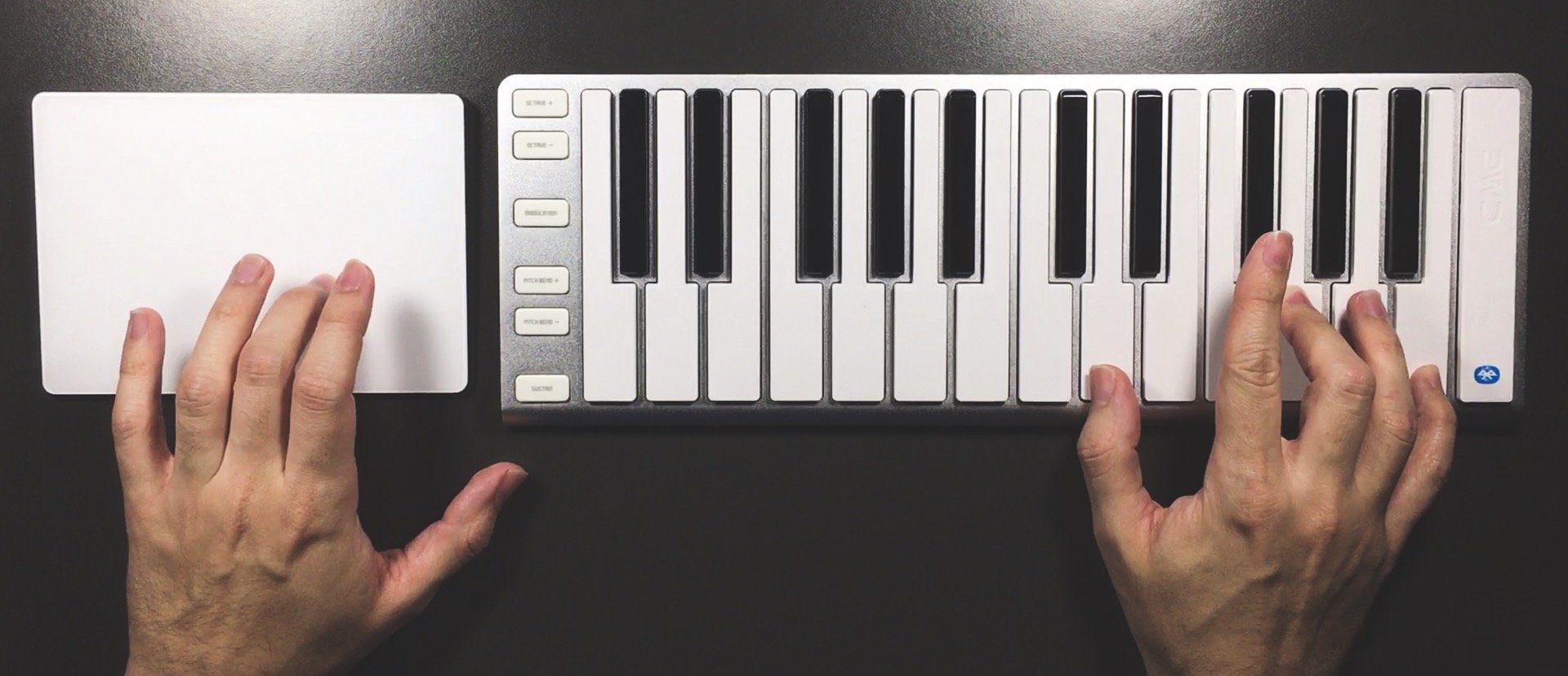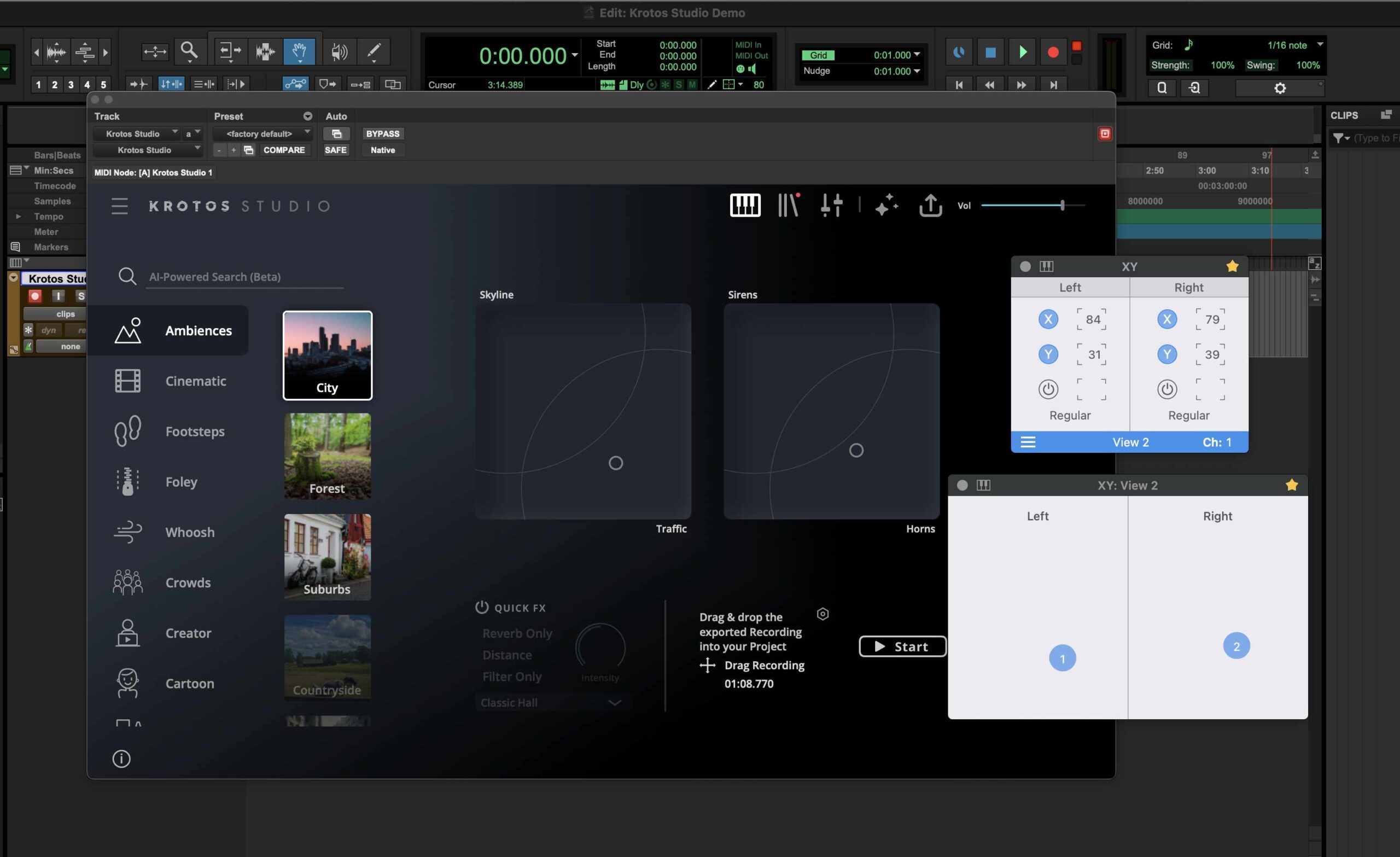The idea of using XY MIDI controllers for sound design is really interesting—multiple parameters in a virtual instrument can be assigned to one controller that works in two or three dimensions, bringing the opportunity to change the sound creatively. Of course, someone can say a simple knob or slider can do something similar, but there are physical limitations moving many controllers in different directions at the same time, specially if you want to add expression to a sound with one hand while playing notes with the other.
AudioSwift for macOS lets you use the smooth glass surface of a trackpad as an ultra-portable and multipurpose XY pad MIDI controller. With one, two or three fingers gestures, the sound designer controls up to three XY pads on a single trackpad. If the device has Force Touch support, a third dimension is available by pressing the surface, sending continuous aftertouch MIDI messages. In this article, I’m going to show you three examples using well known virtual instruments with AudioSwift in XY Mode.
Deep Real-Time Control in Zebra
The workhorse synth from u-he, Zebra is widely used by soundtrack composers and music producers. It’s a modular synthesizer with numerous sculpting tools to create a variety of sound textures. Some of these tools are four XY pads with a deep matrix section, where each X or Y axis can control up to eight Zebra parameters, each one with its own range control.
Zebra was recently updated to version 2.9 and one of its new features is that now all factory presets have XY pad control assignments already patched, making it easier for the user to play with the sounds. We just need to map each XY pad to AudioSwift using Zebra’s MIDI Learn built-in function and the trackpad becomes a performance controller.
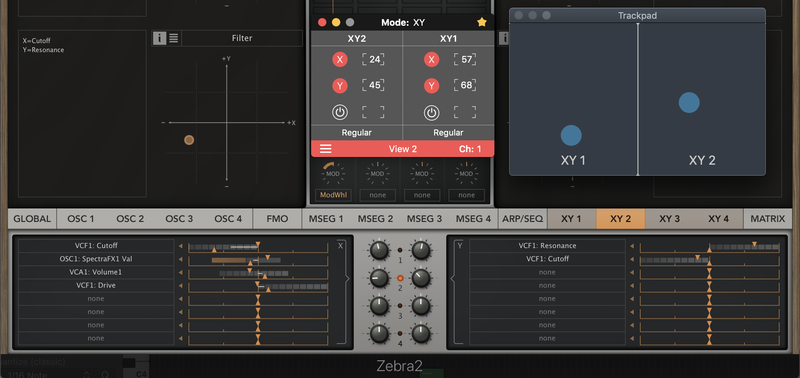
AudioSwift can divide the trackpad into two XY pads, independent from each other. These will control the first pair of XY pads in Zebra but we can use a different MIDI channel to assign the other pair without changing the CC numbers. In AudioSwift, to change the MIDI channel just press the right and left keys.
In the following demo, one XY pad controls the filter’s cutoff and resonance, and the other the oscillator’s settings. Both controllers have the Return to Default feature enabled in AudioSwift—the XY pads return automatically to a default value set by the user when the fingers are lifted.
For the next demo, we are going to use The Dark Zebra version. This time we have configured three XY pads so each one will be controlled depending if one, two or three fingers are touching the surface at the same time.
Cinematic Tension with Thrill
Thrill is a Kontakt toolbox from Native Instruments for cinematic atmospheres, built around a large library of eclectic source recordings featuring orchestral sections, percussion, vocals and synthesized samples. Thrill’s easy to use interface consists of a powerful XY control to sweep between different sounds and intensities, creating sonic tensions that build up with the controller’s movements.
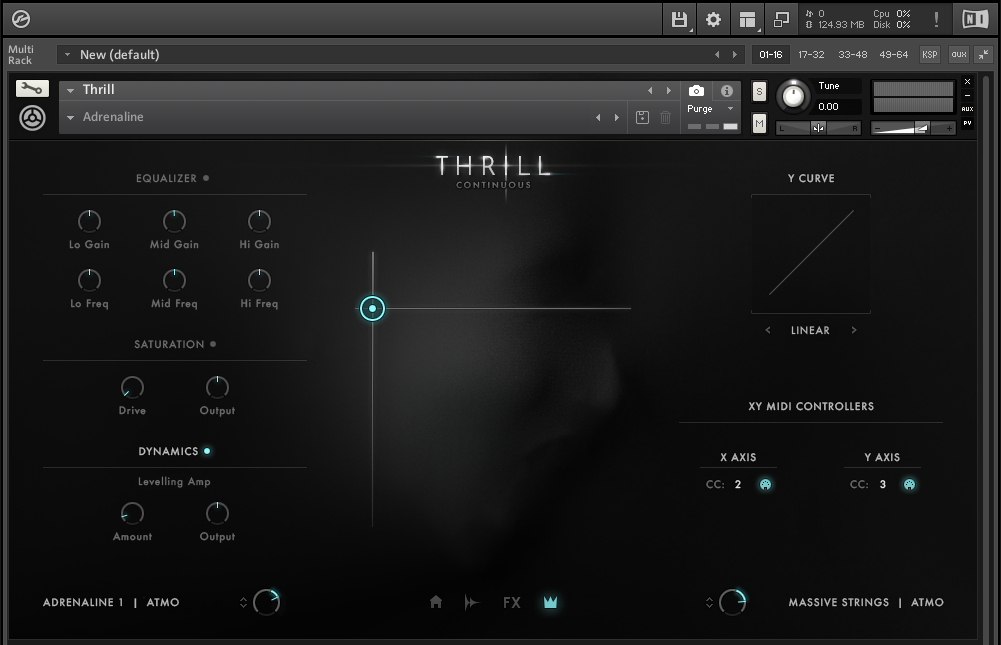
Mapping AudioSwift to Thrill is quite easy. Set a control change (CC) number for each axis in the plugin’s settings and then type the same numbers in the AudioSwift Console window. Here is a quick demo by film and media composer Steve Lehmann controlling Thrill and also Native Instruments Absynth with a Magic Trackpad 2.
Soundscapes for TV, Films and Video Games
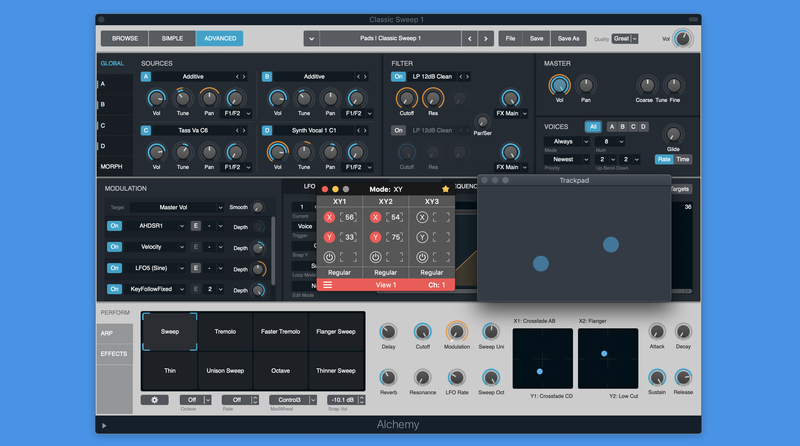
Alchemy is a powerful synthesizer bundled with Logic Pro X. It features additive, spectral and granular synthesis plus sampling, and it comes with a great selection of presets for creating evolving soundscapes. The two included XY pads at the bottom section of the plugin are useful to morph between sounds and create interest through movement. Using Logic Pro X built-in MIDI Learn Assignments (shortcut CMD + L), the XY parameters can be mapped to AudioSwift. The next video shows the first XY pad in Alchemy being controlled using a one finger gesture and the second XY pad with two fingers. Applying pressure to the surface controls the tuning of one of the synth’s sources.
As you can see, a trackpad with AudioSwift opens up endless sonic possibilities that otherwise will be hard to achieve with knobs. I showed you three virtual instruments that have XY pads in their user interfaces, but the same idea can be applied to any plugin you have; just map the parameters you want to control with AudioSwift. And also, the MIDI from the trackpad can be rerouted out of your DAW and sent to your favorite hardware synthesizers. To learn more about setting up AudioSwift as XY pads, make sure to check out the XY Mode tutorial or download the user guide.

